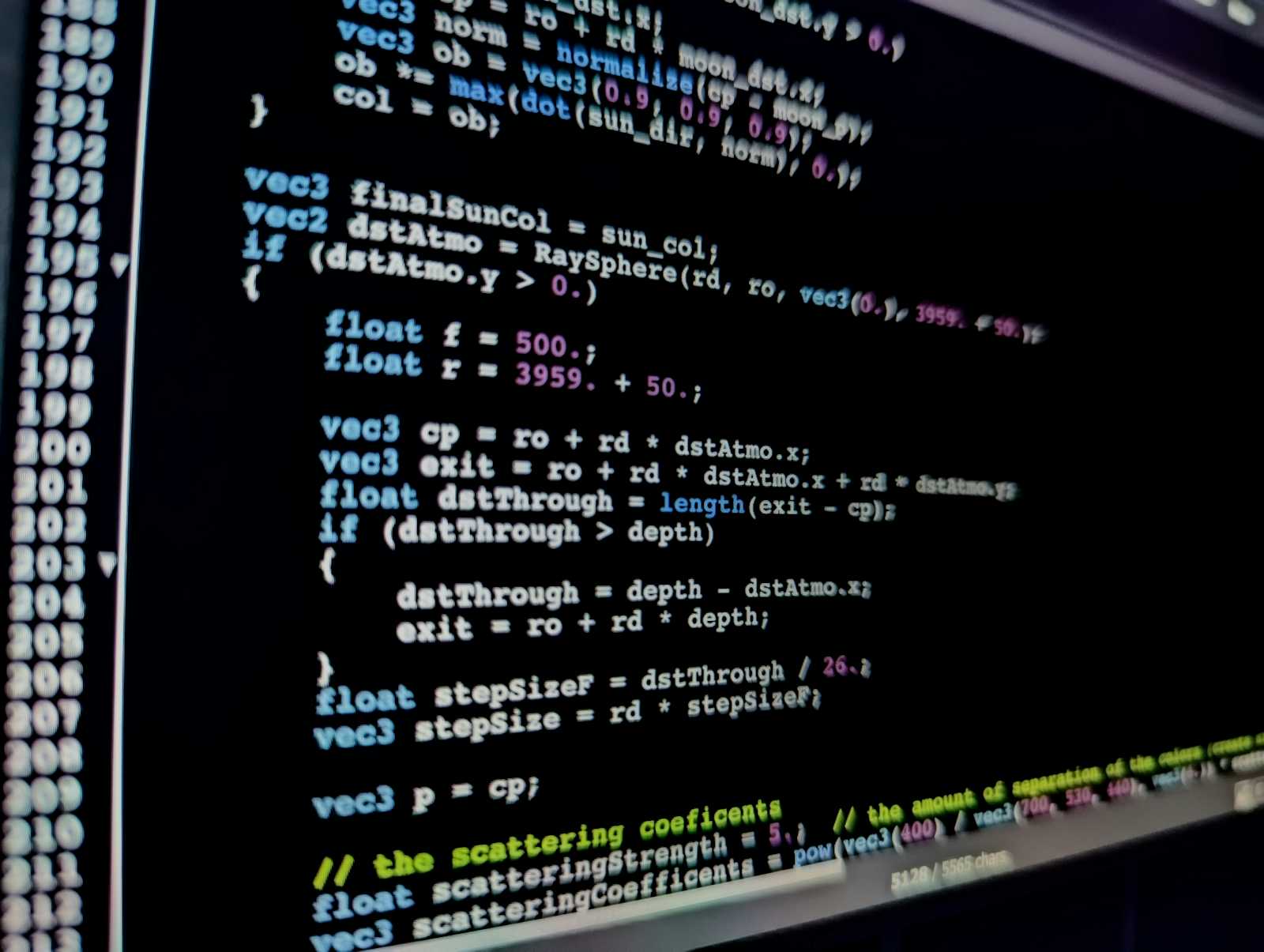Implementing Quantum Reinforcement Learning on Alibaba Cloud
 Farah
FarahTable of contents
- 1. Introduction
- 2. Basics of Quantum Computing
- 3. Introduction to Reinforcement Learning
- 4. Quantum Reinforcement Learning
- 5. Overview of Alibaba Cloud
- 6. Setting Up the Environment on Alibaba Cloud
- 7. Implementing Quantum Reinforcement Learning
- 8. Case Study or Example Application
- 9. Challenges and Future Directions
- 10. Conclusion

1. Introduction
Quantum Reinforcement Learning (QRL) represents a cutting-edge intersection of quantum computing and machine learning. This revolutionary approach combines the power of quantum mechanics with the adaptability of reinforcement learning, potentially unlocking solutions to complex problems that are intractable for classical computers.
Explanation of Quantum Reinforcement Learning
Quantum Reinforcement Learning leverages quantum computational techniques to enhance traditional reinforcement learning algorithms. It exploits quantum phenomena such as superposition and entanglement to process information and make decisions in ways that classical computers cannot.
Importance and potential of Quantum Reinforcement Learning
The potential of QRL is vast and far-reaching. It could dramatically accelerate optimization processes in fields such as:
Finance: Portfolio optimization and risk management
Drug discovery: Molecular simulations and protein folding
Logistics: Supply chain optimization and route planning
Artificial Intelligence: Enhancing decision-making processes in complex environments
Overview of Alibaba Cloud
Alibaba Cloud, also known as Aliyun, is a leading cloud computing platform that offers a wide range of services, including quantum computing resources. By providing access to quantum simulators and, in some cases, actual quantum hardware, Alibaba Cloud is democratizing access to quantum technologies, enabling researchers and businesses to explore the potential of quantum computing without the need for in-house quantum hardware.
2. Basics of Quantum Computing
Fundamentals of quantum mechanics
Quantum computing is based on the principles of quantum mechanics, which describe the behavior of matter and energy at the atomic and subatomic levels. Key concepts include:
Superposition: A quantum system can exist in multiple states simultaneously
Entanglement: Quantum particles can be correlated in ways that are not possible in classical physics
Interference: Quantum states can interfere with each other, leading to amplification or cancellation of probabilities
Qubits and quantum gates
Qubits: The fundamental unit of quantum information, analogous to classical bits but capable of existing in superposition
Quantum gates: Operations that manipulate qubits, such as Hadamard gates (creating superposition) and CNOT gates (entangling qubits)
Quantum algorithms
Quantum algorithms are designed to leverage quantum phenomena to solve specific problems more efficiently than classical algorithms. Notable examples include:
Shor's algorithm for factoring large numbers
Grover's algorithm for unstructured search
Quantum Approximate Optimization Algorithm (QAOA) for combinatorial optimization
Comparison to classical computing
While classical computers operate on deterministic bits (0 or 1), quantum computers use probabilistic qubits that can represent multiple states simultaneously. This allows quantum computers to perform certain calculations exponentially faster than classical computers, particularly in areas such as optimization, simulation, and cryptography.
3. Introduction to Reinforcement Learning
Concepts of reinforcement learning
Reinforcement Learning (RL) is a type of machine learning where an agent learns to make decisions by interacting with an environment. The goal is to learn a policy that maximizes cumulative rewards over time.
Key components: agents, environments, rewards
Agent: The learner or decision-maker
Environment: The world in which the agent operates
State: The current situation of the agent in the environment
Action: A choice made by the agent
Reward: Feedback from the environment indicating the desirability of the action
Traditional reinforcement learning algorithms
Q-Learning: A model-free algorithm that learns an action-value function
Policy Gradient Methods: Directly optimize the policy without using a value function
Actor-Critic Methods: Combine value function approximation with policy optimization
4. Quantum Reinforcement Learning
Integrating quantum computing with reinforcement learning
QRL aims to enhance traditional RL algorithms by leveraging quantum computations. This can be done in several ways:
Quantum state representation of the environment
Quantum circuits for policy or value function approximation
Quantum algorithms for action selection or state preparation
Advantages of quantum reinforcement learning
Potential for quadratic or exponential speedup in certain learning tasks
Ability to represent and process complex probability distributions
Enhanced exploration of the state space through quantum superposition
Key quantum reinforcement learning algorithms
Quantum Approximate Optimization Algorithm (QAOA) for RL
Quantum Policy Iteration
Quantum Value Iteration
Quantum Boltzmann Machines for RL
5. Overview of Alibaba Cloud
Introduction to Alibaba Cloud services
Alibaba Cloud offers a comprehensive suite of cloud computing services, including:
Elastic Compute Service (ECS)
Object Storage Service (OSS)
Relational Database Service (RDS)
Big Data and AI services
Quantum computing capabilities on Alibaba Cloud
Alibaba Cloud provides access to quantum computing resources through its platform:
Quantum circuit simulators
Quantum algorithm libraries
Integration with classical cloud computing resources
Tools and resources available on Alibaba Cloud for quantum computing
Quantum Development Kit
Quantum Circuit Simulator
Quantum Machine Learning libraries
Documentation and tutorials
6. Setting Up the Environment on Alibaba Cloud
Creating an Alibaba Cloud account
Visit the Alibaba Cloud website
Click on "Free Account" and follow the registration process
Verify your account and set up payment information
Accessing quantum computing resources
Navigate to the Quantum Computing section in the Alibaba Cloud console
Enable quantum computing services for your account
Choose the appropriate quantum computing resources (simulator or hardware access)
Necessary software installations and configurations
Install the Alibaba Cloud CLI
Set up the Quantum Development Kit
Configure your local environment with necessary SDKs and libraries
7. Implementing Quantum Reinforcement Learning
Choosing an appropriate quantum reinforcement learning algorithm
Select an algorithm based on your specific problem and available quantum resources. For example, you might choose a Quantum Approximate Optimization Algorithm (QAOA) based approach for combinatorial optimization problems.
Setting up the quantum environment
from alibabacloud_quantum import Circuit, QuantumRegister, ClassicalRegister
# Create quantum and classical registers
q_reg = QuantumRegister(4)
c_reg = ClassicalRegister(4)
# Create a quantum circuit
circuit = Circuit(q_reg, c_reg)
Code implementation on Alibaba Cloud
Initializing the quantum environment
# Apply initial gates to prepare the quantum state
circuit.h(q_reg[0]) # Hadamard gate for superposition
circuit.cx(q_reg[0], q_reg[1]) # CNOT gate for entanglement
Developing the reinforcement learning model
def quantum_policy(state):
# Encode the state into the quantum circuit
encode_state(circuit, state)
# Apply quantum gates for policy
circuit.ry(theta, q_reg[0])
circuit.cx(q_reg[0], q_reg[1])
# Measure the qubits
circuit.measure(q_reg, c_reg)
# Execute the circuit
job = execute(circuit, backend='alibaba_quantum_simulator')
result = job.result()
# Process the measurement results to determine the action
action = process_results(result)
return action
def quantum_value_function(state):
# Similar implementation for value function approximation
pass
# Main RL loop
for episode in range(num_episodes):
state = env.reset()
for step in range(max_steps):
action = quantum_policy(state)
next_state, reward, done, _ = env.step(action)
# Update quantum circuit parameters based on the reward
update_quantum_parameters(reward)
state = next_state
if done:
break
Running simulations and obtaining results
# Execute the quantum reinforcement learning algorithm
results = run_quantum_rl(env, num_episodes, max_steps)
# Analyze the results
average_reward = analyze_results(results)
print(f"Average reward: {average_reward}")
Analyzing the performance and tuning parameters
Compare the performance of your QRL implementation with classical RL methods
Adjust quantum circuit design, number of qubits, and classical RL parameters
Experiment with different quantum algorithms and encodings
8. Case Study or Example Application
Description of a suitable use case
Let's consider a quantum reinforcement learning approach to solve the Traveling Salesman Problem (TSP) for a small number of cities.
Detailed implementation steps
Encode the TSP into a quantum state representation
Implement a quantum circuit that represents possible routes
Use a QAOA-inspired approach to find the optimal route
Integrate this quantum subroutine into a reinforcement learning framework
Train the agent to improve its route-finding capabilities over multiple episodes
Results and discussion
Compare the performance of the QRL approach with classical methods
Analyze the scalability and limitations of the quantum approach
Discuss potential improvements and optimizations
9. Challenges and Future Directions
Technical challenges
Noise and decoherence in quantum systems
Limited qubit counts and connectivity in current quantum hardware
The need for error correction and fault-tolerant quantum computing
Research areas and potential breakthroughs
Development of more robust quantum reinforcement learning algorithms
Improved quantum error correction techniques
Advances in quantum hardware, increasing qubit count and quality
Future applications of quantum reinforcement learning
Large-scale optimization problems in logistics and supply chain management
Financial modeling and risk assessment
Drug discovery and materials science
Climate modeling and weather prediction
10. Conclusion
Summary of key points
Quantum Reinforcement Learning combines quantum computing with reinforcement learning to potentially solve complex problems more efficiently
Alibaba Cloud provides accessible quantum computing resources for implementing QRL
Implementing QRL involves setting up quantum circuits, integrating them with classical RL algorithms, and optimizing performance
Significance of implementing quantum reinforcement learning on Alibaba Cloud
By leveraging Alibaba Cloud's quantum computing services, researchers and businesses can explore the potential of QRL without the need for in-house quantum hardware. This accessibility is crucial for driving innovation and advancing the field of quantum machine learning.
Final thoughts and future perspectives
As quantum hardware and algorithms continue to advance, we can expect even more powerful applications of QRL in the future. The field is ripe for innovation, and implementations on platforms like Alibaba Cloud will play a crucial role in realizing the potential of quantum reinforcement learning across various industries and scientific domains.
Subscribe to my newsletter
Read articles from Farah directly inside your inbox. Subscribe to the newsletter, and don't miss out.
Written by

Farah
Farah
I am Machine Learning Engineer who is experienced in developing end-to-end machine learning pipelines, from data preprocessing to model deployment.